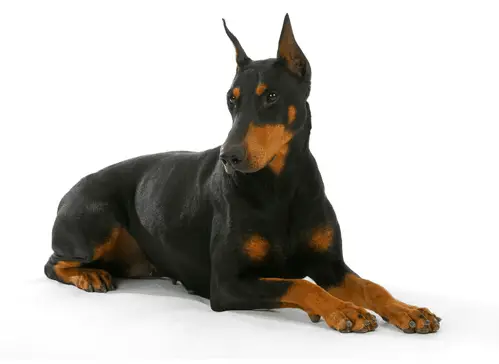When it comes to getting a new dog, too many people are quick to rush into the decision based on how a breed looks and not how it will fit into their lives.
I’ve spoken to far too many couples who have bought a dog on impulse, often for a lot of money from a reputable breeder, only for them to end up in a dog shelter.
This got me thinking, what dog breeds would you never own?
There isn’t necessarily a hard and fast answer for every potential dog owner, as it will depend mostly on how the dog fits into your lifestyle.
It’s very important to research a breed before you commit to buy and look for things such as health issues, temperament, exercise needed, and lifespan.
Which Are The Worst Breeds To Own?
Again, this will be dependent on what specifically you’re looking for in a dog.
For example, a Labrador could be considered a bad breed for some people, particularly if they can’t handle a big dog or don’t have the time for lots of exercise.
[ FAQ: Which is Better: Male or Female Labrador? ]There are very few breeds that should be given a blanket “no,” as many that have developed a reputation of being a bad breed are usually just raised poorly.
However, there are some breeds that generally should be avoided if you’re looking for a “normal” pet dog.
One type of dog I would consider to be a blanket no, not just in my own home, but hopefully, in many other people’s, are teacup dogs.
This doesn’t narrow it down to one specific breed, as many have been bred to be teacup size.
Good examples of teacup dogs are certain Chihuahuas and Shih Tzus.
.

These dogs have been specifically bred to be small, and this leads to a wide range of health issues.
Teacup breeds are also sold under different names, such as “tiny” or “imperial,” so keep your eye out for these names too.
Some breeders might also try and sell you the runt of a litter for more than its siblings, simply by claiming it’s a teacup breed.
Their size can lead to heart defects, neurological issues, and breathing problems.
Not only will you find yourself paying extra for a tiny dog, but you’ll inevitably find yourself shelling out plenty of money on the vet’s bills, only for the dog to die young anyway.
I would also personally argue against breeds such as Huskies and Samoyeds.
These are both amazing breeds and have built up such massive cultural popularity that more people are seeking them out than ever before.
However, there is a big responsibility associated with these dogs, mainly because of their need to exercise.
They were bred as working dogs in some of the coldest climates and need hours of exercise a day!
There’s also the issue of husky shedding. Of course, many breeds shed, but Huskies have special coats designed for cold weather, resulting in lots of extra hair.
And there’s only one place for this hair to end up: on your floor.
They’re also very intelligent dogs and so require lots of mental stimulation, which is something that not many families can provide.
And lastly, they love to howl, and it’s very loud. This is definitely something you would need to consider if you live anywhere but in the country.
The biggest thing I want you to take away from this article is to rethink your definition of “the worst dog breeds to own,” as this is quite a subjective term .
For example, some people swear by keeping traditionally aggressive breeds, such as Mastiffs, and others have problems with traditionally popular breeds, such as Spaniels.
The key is to research thoroughly and identify warning signs such as health issues, the ability to train, and the possibility of biting.
Dog Breeds With The Most Health Issues
I think one of the most important things to consider when deciding on “worst dog breeds” is any potential health issues.
A friend of mine recently paid an obscene amount of money to have their Bulldog’s nostrils widened in order to prevent respiratory issues.
So here is a list of some dog breeds with the most health issues.
Bulldog (and Pug) – respiratory problems
This point actually counts for any dogs with squished faces, which is arguably one of the most problematic alterations that have been bred into dogs.
What is the cause of this breathing issue with pugs and bulldogs?
Any breeds that come under the term “brachycephalic” have elongated soft palates, small nostrils, and a narrow trachea, all of which lead to extensive breathing problems.
[ Check Out Our Pug with fewer breathing problems Article ]
Pug (and Bulldog) – eye problems
Another point for brachycephalic breeds is their constant eye problems.
Having a pug with bulging eyes might be cute, but it also means their face isn’t the right shape for stopping particles from getting stuck in their eyes.
This can lead to ulcers, which require surgery to remove and can lead to blindness.
In some extreme cases, their eyes can actually pop out of their heads.
Golden Retrievers and Labradors – obesity
These two breeds are particularly prone to weight issues, which obviously carries its own range of complications.
Both breeds need regular and vigorous exercise, and you’ll also need to control their diet carefully.
Beagle – epilepsy
Epilepsy is particularly common in Beagles, but can also affect some Spaniel breeds due to pressure on the brain.
Like most health conditions, this is mostly related to human breeding dogs with smaller heads, something that’s apparently considered desirable.
Granted, the condition can be managed with medication, but this can become expensive.
German Shorthaired Pointer – aortic stenosis
Aortic stenosis is essentially the narrowing of the aorta and can cause a range of heart issues.
This isn’t specific to this breed, but Pointers are definitely more susceptible to it.
Again, this can be managed with medication but can have a big impact on the dog’s life expectancy.
This definitely isn’t an exhaustive list of dogs with the most health issues, but it’s intended to give you an idea of the things to look out for.
While many can be managed with medication, this obviously means frequent trips to the vet’s, which adds up to a massive expenditure.
Worst Dog Breeds For Biting
Another important thing to consider – particularly if you’ve got children – is whether a breed is prone to biting.
The likelihood of this happening will be based on a range of factors, and will usually only happen if the dog is scared or angry.
However, it’s worth considering if you want to be on the safe side. Here are some of the worst dog breeds for biting:
- Pit Bull
- German Shepherd
- Jack Russell
- Bull Terrier
- Lhasa Apso
- Bulldog
- Doberman
- Husky
- Rottweiler
Many of these breeds were originally bred for guarding or hunting purposes, so you do have to give them some leeway.

It is worth thinking about this issue in some detail, though, and doing plenty of research before committing to buying a particular breed.
Even a laid-back, friendly dog can bite if they feel threatened, and biting is a potential issue for any breed.
That said, don’t let this put you off ever owning a dog, just make sure you do everything possible to prevent a situation occurring that leads to biting.
Worst Dog Breeds To Train
Any dog should be given basic obedience training, even if it’s just enough for them to come when called.
Obedience training allows you to have much greater control over your dog, which is helpful if you plan on taking them to any public space.
Some breeds are harder to train, either due to stubbornness or a lack of intelligence. Here are some of the worst dog breeds to train:
- Rottweiler
- American Pit Bull Terrier
- Husky
- Malamute
- Bullmastiff
- Shar-Pei
- Afghan Hound
- Bassett Hound
- Beagle
- Bulldog
- Chow Chow
Again, this list isn’t exhaustive, and just because a breed is listed shouldn’t put you off getting it.

These breeds aren’t impossible to train. They just take much more patience and commitment than something like a Labrador, which is very intelligent and picks up commands quickly.
Conclusion:
As you can see from this article, there’s more to the idea of “worst dog breeds to own” than you probably thought.
It’s more down to how a dog will fit in with your lifestyle than it is about general perceptions of a breed.
When choosing a new dog, consider a range of factors to decide whether a breed is right for you.
For example, a pug might be suitable because you only want a small lap dog, and you’re happy to deal with potential health issues.
Alternatively, a Husky might be a good choice because you’re happy to go on massive walks every day.
Either way, the most important final point I can make is that there’s no such thing as too much research.
The more you know about a breed, the more informed a decision you’ll make.
And it’s better to put yourself off a breed before you buy than it is to take them down a shelter because you’ve made a mistake.
You’ll find more dog pros and cons questions in the links below:
- Co-owning a dog pros and cons
- Pros and Cons of Being a Guardian Dog Owner
- 19 Dog breeds that are good with cats
- 7 Reasons why dogs lick ears
- English Bulldog vs French Bulldog
- Why do dogs bark in their sleep?
- Why do dogs have jowls?
- Why do dogs howl in their sleep?
- Wolf vs Husky differences
- What is the differences between Labrador vs Golden Retriever?


